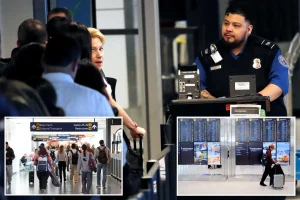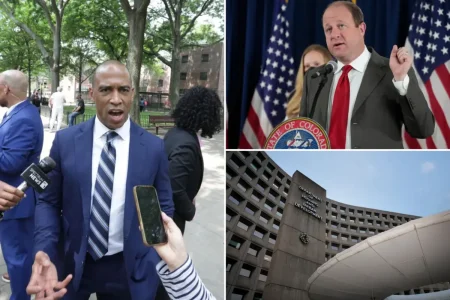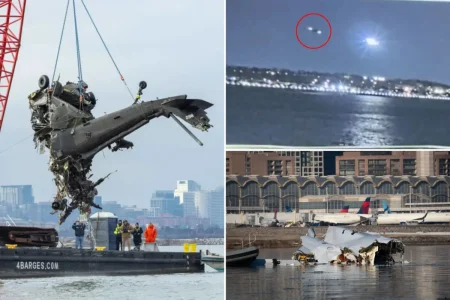Russia’s Nuclear Posturing: A Strategic Message to Washington
Moscow Showcases Military Might to Push US Toward Negotiating Table
In a calculated display of military prowess, Russia has recently conducted a series of high-profile weapons tests, sending an unmistakable message to the United States that the Kremlin remains a formidable nuclear power that cannot be ignored on the global stage. These demonstrations, featuring advanced hypersonic missiles and next-generation nuclear delivery systems, appear deliberately timed to coincide with heightened tensions between Moscow and Washington, underscoring Russia’s determination to be treated as an equal in international security matters.
Defense analysts suggest these tests represent more than mere technological showcasing—they form a core component of Russia’s strategic communication aimed at compelling the Biden administration to engage in substantive negotiations on arms control, European security architecture, and other contentious issues that have strained bilateral relations. By highlighting its nuclear modernization program, Moscow is effectively reminding Washington that despite economic sanctions and international isolation following its actions in Ukraine, Russia retains the capacity to pose existential threats to American security interests.
“These tests reflect a classic approach in Russian strategic thinking,” explains Dr. Alexandra Mikhailova, senior fellow at the Institute for International Security Studies. “When diplomatic channels appear blocked, the Kremlin often resorts to demonstrating military capabilities to create leverage. It’s essentially saying: ‘You may not want to talk to us, but you cannot afford to ignore us.’ This pattern has historical precedents dating back to the Cold War era, though today’s context brings new complexities and risks.”
The Technology Behind the Posturing
The recent weapons tests have featured some of Russia’s most advanced military technology, carefully selected to demonstrate capabilities that directly challenge America’s missile defense systems. The Avangard hypersonic glide vehicle, which President Vladimir Putin has described as “practically invulnerable” to existing missile defense systems, was prominently featured. Additionally, Russia showcased its Kinzhal air-launched ballistic missile and tested elements of its Sarmat intercontinental ballistic missile system—nicknamed “Satan II” by NATO—which can reportedly carry multiple nuclear warheads over unprecedented distances.
Russian state media has provided extensive coverage of these tests, with detailed explanations of their technical specifications and strategic significance. This domestic messaging serves dual purposes: bolstering national pride while reinforcing President Putin’s narrative that Russia remains a technological superpower despite Western attempts to isolate it economically. For international audiences, particularly military planners in Washington, these demonstrations aim to create uncertainty about America’s ability to defend against such advanced weapons systems.
Military technology expert Colonel Viktor Baranets (Ret.) told Russian media that these systems represent “a new chapter in strategic deterrence.” Independent Western analysts, while sometimes skeptical of Russia’s more grandiose claims, acknowledge that several of these weapons systems present genuine challenges to existing defense architectures. “Even if some capabilities are exaggerated, the fundamental message is accurate—hypersonic weapons significantly complicate missile defense calculations,” notes Dr. Heather Wilson, former U.S. Air Force Secretary and defense policy specialist.
Historical Context and Strategic Calculations
This pattern of military signaling has deep roots in Russian strategic culture. During periods of heightened tension throughout the Cold War, both Moscow and Washington engaged in similar displays of military capability to establish credibility in diplomatic negotiations. The current situation, however, operates in a significantly different geopolitical landscape—one characterized by a multipolar world order, the emergence of China as a strategic competitor, and new domains of conflict including cyber and space.
Russia’s strategic calculations appear based on the assessment that the United States will eventually conclude that engagement on arms control and broader security issues serves American interests, particularly given the simultaneous challenges Washington faces from Beijing. By demonstrating continued nuclear modernization despite economic constraints, Moscow aims to convince U.S. policymakers that postponing negotiations only allows Russia to further develop capabilities that could undermine American security advantages.
“The Kremlin is betting that these displays of strength will eventually bring Washington to the table under terms more favorable to Russian interests,” explains Dr. Andrew Kuchins, former director of the Russia and Eurasia Program at the Center for Strategic and International Studies. “It’s a high-stakes approach that carries risks of miscalculation, but from Moscow’s perspective, it may seem like the most effective option when conventional diplomacy has yielded limited results and Russia feels its core security concerns have been dismissed by the West.”
Implications for International Security Architecture
The implications of Russia’s weapons testing extend beyond bilateral relations with the United States. These demonstrations occur against the backdrop of a deteriorating international arms control framework, following the collapse of the Intermediate-Range Nuclear Forces (INF) Treaty and uncertainties surrounding the future of the New START agreement. Security experts warn that without functioning arms control mechanisms, the risk of miscalculation increases dramatically, potentially triggering dangerous escalation cycles.
European allies find themselves in a particularly precarious position, geographically situated between two nuclear powers engaged in increasingly assertive posturing. NATO officials have responded to Russia’s weapons tests with calls for strengthening collective defense capabilities while simultaneously maintaining channels for dialogue with Moscow. This dual-track approach reflects the alliance’s recognition that neither unchecked confrontation nor appeasement offers a sustainable path forward.
“We’re witnessing the fragmentation of the post-Cold War security architecture that provided relative stability for decades,” observes Dr. François Heisbourg, special adviser at the Foundation for Strategic Research in Paris. “Russia’s demonstrations of new weapons systems, combined with its willingness to use military force as witnessed in Ukraine and Syria, represent a fundamental challenge to European security assumptions. The question now is whether these developments will ultimately lead to a dangerous arms race or create sufficient urgency to establish new frameworks for strategic stability.”
The Path Forward: Deterrence, Diplomacy, or Both?
As Washington formulates its response to Moscow’s nuclear signaling, policymakers face difficult choices between demonstrating resolve through counter-measures and seeking diplomatic engagement that could be perceived as rewarding provocative behavior. The Biden administration has thus far maintained a balanced approach—reaffirming security commitments to allies while keeping channels open for dialogue on strategic stability and arms control.
Arms control experts emphasize that despite the contentious relationship, both nations share fundamental interests in preventing nuclear proliferation, avoiding accidental escalation, and maintaining predictability in strategic forces. These mutual concerns could potentially provide foundation for pragmatic negotiations even amid broader geopolitical competition. Historical precedent suggests that some of the most significant arms control breakthroughs occurred during periods of heightened tension, precisely because both sides recognized the dangers of unconstrained military competition.
“The challenge for American policymakers is crafting a response that neither appears weak in the face of Russian provocations nor closes doors to constructive engagement on issues of mutual interest,” explains Ambassador Rose Gottemoeller, former U.S. Under Secretary of State for Arms Control and International Security. “This requires sophisticated statecraft that combines credible deterrence with creative diplomacy—maintaining clear red lines while identifying potential areas for cooperation. Russia’s weapons tests make this balancing act more difficult but also more essential. The stakes, quite literally, could not be higher for global security.”
As Moscow continues its strategic signaling through weapons demonstrations, the international community watches closely for indications of how Washington will navigate this complex challenge. The outcome of this high-stakes interaction between nuclear powers will significantly influence global security dynamics for years to come, potentially determining whether a new era of arms control cooperation emerges or whether the world faces a dangerous new period of unconstrained military competition.










